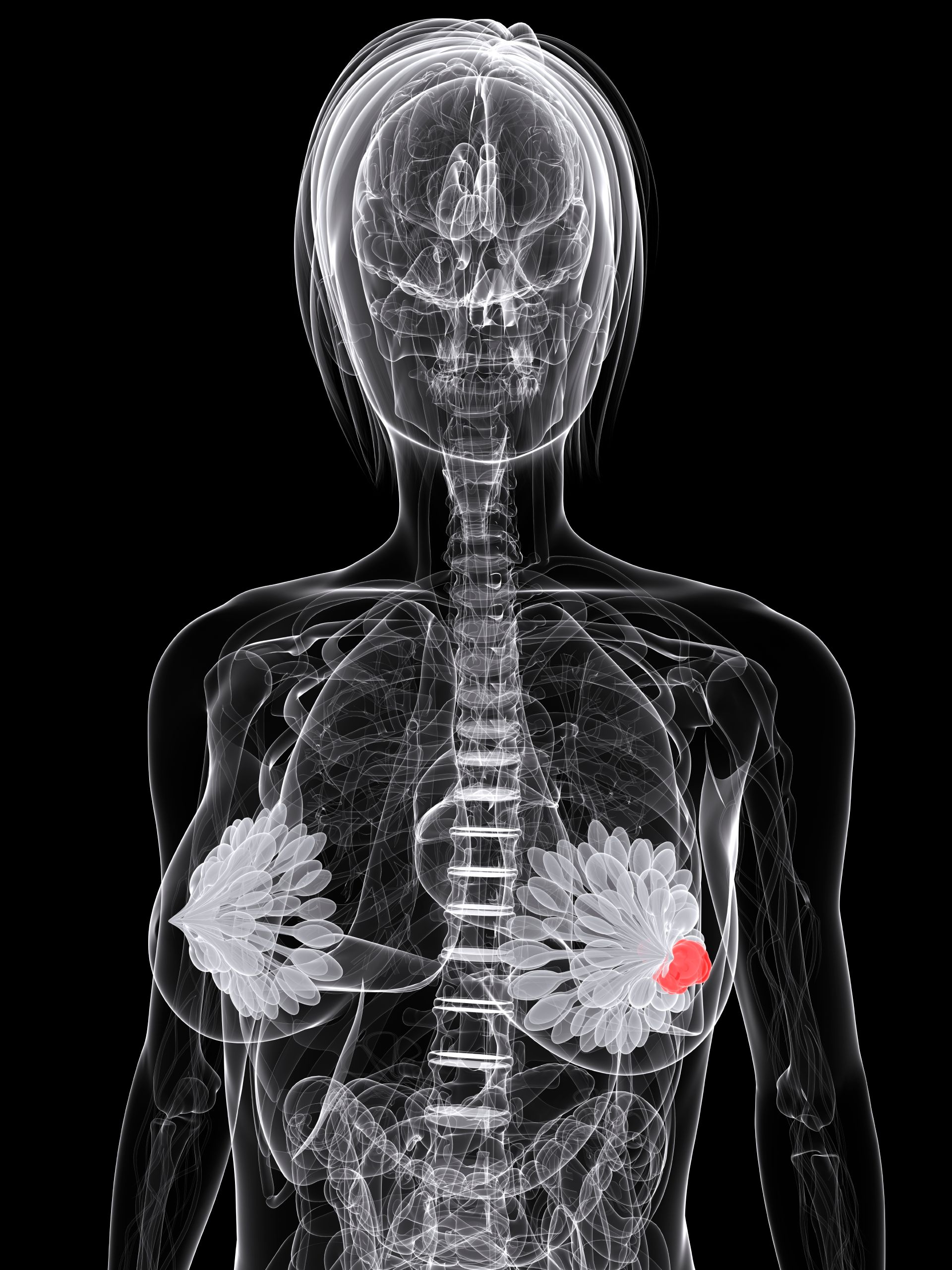Shorter Radiation Technique Comparable to Standard Radiation for Low-Risk Breast Cancer
A phase III study shows noninferiority of accelerated partial breast irradiation as compared to conventional whole breast irradiation.
carcinoid syndrome

Accelerated partial breast irradiation (APBI) using multicatheter brachytherapy is as effective as conventional whole breast irradiation (WBI) for selected low-risk patients following breast-conserving surgery, according to a long-term follow-up of a phase III multicenter European noninferiority study. The rates of local control, disease-free survival (DFS), and overall survival (OS) were comparable for both techniques.
This is the first phase III study proving noninferiority of APBI compared with WBI for select patients with early-stage breast cancer. It is also the most comprehensive study to date comparing these techniques. Results were reported at the 57thAnnual Meeting of ASTRO.
“The results of our study show that, at present, multicatheter brachytherapy is an attractive and viable APBI treatment option for low-risk breast cancer patients after breast conserving surgery,” said lead author Vratislav Strnad, MD, PhD, professor of radiation oncology at University Hospital Erlangen, Germany.
“The results were not totally surprising, because ... results of several smaller phase II trials showed low recurrence rates after breast-conserving surgery and APBI in comparison to WBI. What is surprising, however, is how clear the results are. Our favorable results are in contrast to the disappointing and controversial results reported from other studies that used other APBI techniques, such as intraoperative and external beam radiation therapy,” he said.
Standard WBI uses external beam radiation and treats the entire breast and surrounding chest area for several weeks, followed by a boost of radiation to the tumor bed. Many women choose mastectomy in hopes of avoiding WBI, largely due to the duration of treatment and fears of side effects, Strnad said.
APBI with multicatheter brachytherapy delivers effective radiation dose directly to the tumor, shortening the time of treatment to 4 or 5 days, while limiting side effects of radiation exposure to normal adjacent tissue in the heart, lungs, and skin. The shortened time to treatment with APBI is particularly attractive for elderly patients, working women, and women who have to travel distances to a radiation treatment facility, he explained.
From April 2004 to July of 2009, the multicenter phase III study enrolled 1184 patients from 16 centers in Europe. Patients had early-stage breast cancer (stages 0, I, and IIA), were age 40 years or older, and were treated with breast-conserving surgery. Patients were randomized to conventional WBI (50 Gy with tumor bed boost of 10 Gy about 7 weeks) or APBI using interstitial multicenter brachytherapy for 5 days. Median age was 62 years, and about 50% of patients were younger than 60 years.
Baseline disease and demographic factors were similar for the two groups. At a median follow-up of 6.6 years, 5-year local recurrence rates were 1.4% for APBI versus 0.9% for WBI; 5-year second primary ipsilateral breast cancers were found in 1.1% versus 0.9%, respectively; 5-year DFS rates were 95% versus 94.5%, respectively; 5-year OS rates were 97.3% versus 95.6%, respectively. Local and regional recurrence rates were similar between the two groups for all age groups and all tumor types independent of the type of subsequent therapies that patients received.
Strnad noted that prior recommendations were for APBI to be used in older patientsthose over age 50 or 60 years, but this study showed excellent results in all age groups, including those aged 40 years and older. Longer study is needed to analyze recurrence rates beyond 5 years in different subgroups based on age, according to Strnad.
Catherine Park, MD, USCF, who moderated the press conference where the data were presented, commented that the patients in this study were highly selected. APBI was studied with several techniques. This study focused on multicatheter brachytherapy to deliver the radiation.
“In the US, multicatheter brachytherapy is not widely available. External bean radiation is the most widely used technique for partial breast radiation,” she explained.
Strnad V. Accelerated partial breast irradiation using sole interstitial multicatheter brachytherapy versus whole breast irradiation for early breast cancer: 5-year results of a randomised phase III trial Part I: Local control and survival results. Presented at 57thAnnual Meeting of ASTRO. October 19, 2015: San Antonio, TX. Abstract LBA 7